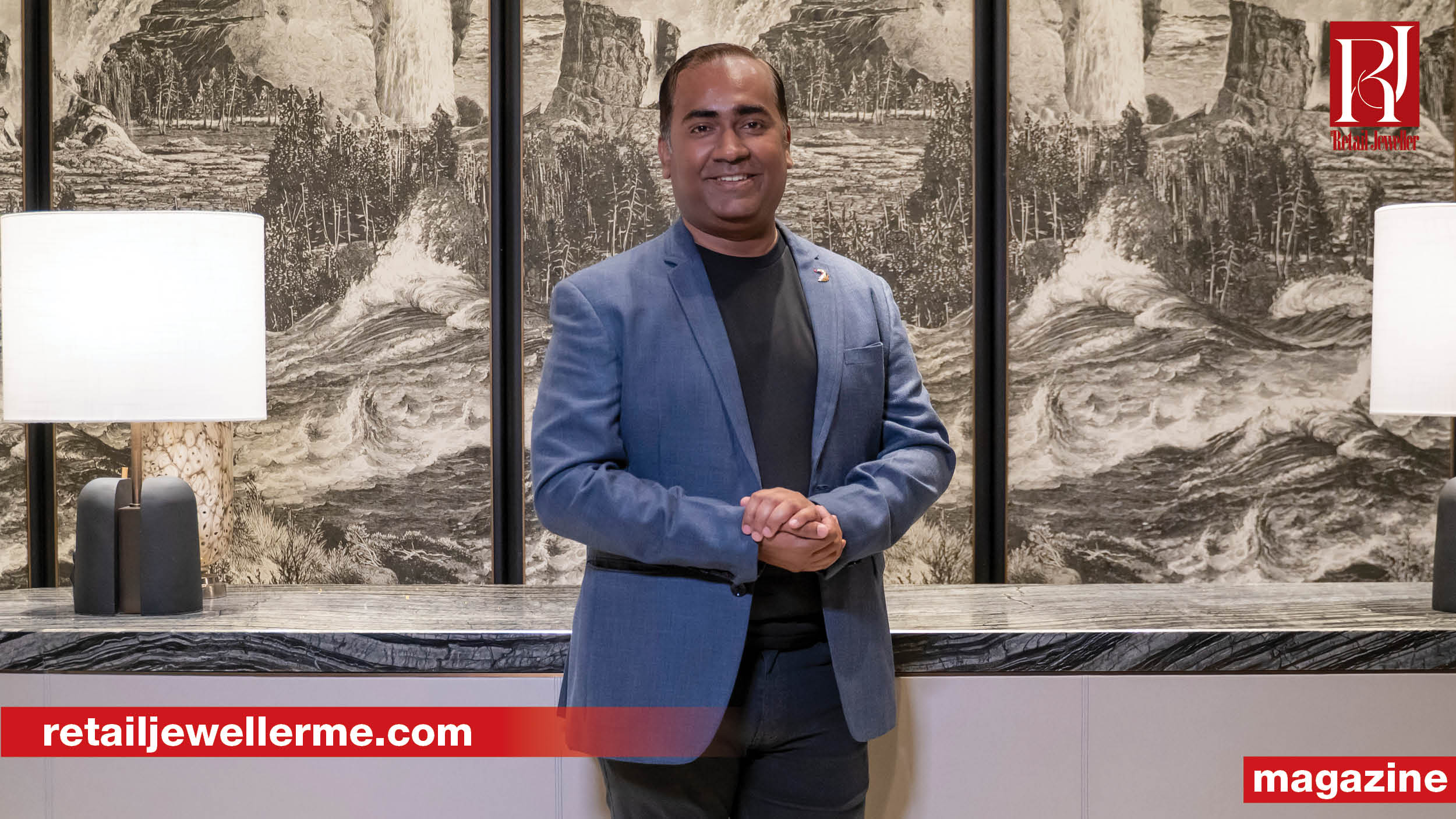The Interview
Not just for NRIs: How Tanishq won over the Middle East’s cosmopolitan shopper

Aditya Singh, Head of Jewellery, International Business at Titan Company, shares insights into how Tanishq has adapted its product offerings, marketing approach, and retail strategy to build a loyal customer base while using the Middle East as a launchpad for further international expansion in an exclusive interaction with The Retail Jeweller Middle East
In just four years of its Middle East launch, Tanishq has established a strong presence in the region, expanding to 15 stores and catering to a diverse customer base spanning over 60 nationalities. From adapting product collections aligning with local cultural sensibilities to implementing a customer engagement strategy that goes beyond traditional retail formats, Tanishq has positioned itself as a formidable player in a highly competitive landscape. Aditya Singh discusses how the brand’s growth in the region reflects a carefully crafted strategy that balances its core values of design, trust, and customer experience with the unique preferences of the Middle Eastern market.
EDITED EXCERPTS:
Tanishq is a well-known brand in India. How do you position the brand in the Middle East, and who is your target audience there?
In India, Tanishq stands for design, trust, and consistent experience— and we’ve brought the same values here. But the Middle East is highly diverse. Each city, like Dubai or Abu Dhabi, has its own customer base and expectations. We launch regionspecific collections like Power Pearls during Ramadan and Vishu for the Malayali diaspora, tailored exclusively for this market. Rather than celebrityled marketing, we highlight real people from the region—educators, dancers, pilots—so customers see themselves in our campaigns. Our aim is to connect meaningfully with different communities while staying true to Tanishq’s core brand strengths.
Who are your primary customers in the Middle East? Is it the local Arab population or the Indian diaspora?
Our customer base spans over 60 nationalities—about 25% are tourists, the rest are residents. Tourists include Indians, the Indian diaspora from the US, UK, Europe, and Arab or Western travellers. Interestingly, Indian, South Asian, and Arab customers share a taste for traditional designs like Kundan Polkis. Many tourists stop in Dubai to shop before heading to India for weddings. While the Gold Souk store attracts tourists, local Arab customers prefer our quieter locations in Barsha, Abu Dhabi, and Doha Festival City, which are strategically placed outside high-traffic commercial areas for more convenience and accessibility.
How has the reduction in gold import duties in India affected your sales in Dubai?
Last year, India reduced import duties on gold, which narrowed the price difference between buying gold in Dubai versus India. This has led to a some 10-15% drop in sales from Indian tourists coming from India. However, this has been offset by an increase in sales from tourists of Indian origin from the US, UK, and other Western countries. Their share has grown by roughly 10%.
What are the major categories of jewellery that sell well in the Middle East?
The buying patterns vary by customer segment. Residents, who shop frequently, often buy everyday pieces like bangles and chains, with occasional purchases of high-value items. Tourists, on the other hand, tend to buy either token pieces like rings or earrings, or heavier wedding sets. For example, Indian families living in the US or Europe often come to Dubai to buy wedding jewellery because they don’t have access to traditional Indian designs in their home countries. Local Arab customers, meanwhile, buy a mix of everyday and wedding jewellery.
How has Tanishq’s e-commerce performed in the Middle East, and what percentage of sales come from online channels?
While e-commerce is often seen as underpenetrated in the Middle East, countries like the UAE and Saudi Arabia have high smartphone and social media usage. Here, customers browse online but prefer purchasing instore, as jewellery retail is widespread and easily accessible. Tanishq supports this with an omni-channel model— online orders are fulfilled by the nearest store, such as Barsha serving Jebel Ali customers—ensuring fast delivery and preserving trust.
What are some of the unique challenges Tanishq has faced in the Middle East, and how have you addressed them?
Entering the Middle East during the COVID-19 lockdown in 2020 was a bold move, but customer response boosted our confidence to expand. A key challenge is the highly competitive market with over 150 stores. We’ve chosen spots off main high streets, which our patrons appreciate. Another challenge is team building, as the Middle East market is transactional, while Tanishq’s focus is on customer experience. However, we’ve successfully built a strong team that aligns with our values.
What has been the growth in customer acquisition over the past four years?
We’ve grown close to 100,000 customers in the Middle East in just these past four years. This growth has been driven by our store expansions and the Encircle loyalty program, which we’ve extended from India.
What marketing strategies have been most effective in attracting customers?
We leverage a mix of digital, social, and traditional media. Radio is particularly important in this market, as people spend a lot of time commuting. We also focus on in-store customer engagement and community-specific events. For example, we often support Indian cultural events in Dubai by purchasing tickets and gifting them to our regular customers.
How do you cater to the local Arab customer base with your designs?
We regularly engage with consumers to understand their preferences and local inspirations. Based on this, we’ve launched several collections tailored to the Arab market. For the UAE’s 50th anniversary, we introduced the UAE Collection, inspired by the national flag and falcon. This was followed by the Rifa collection, resonating with local tastes. Recently, the Power Pearls collection, inspired by the region’s pearl diving heritage, was launched during Ramadan and received a great response. Beyond the region, we’ve expanded to the US and Singapore, with six stores in the US already, and are evaluating further international opportunities.
Written by Maithili Patange

















